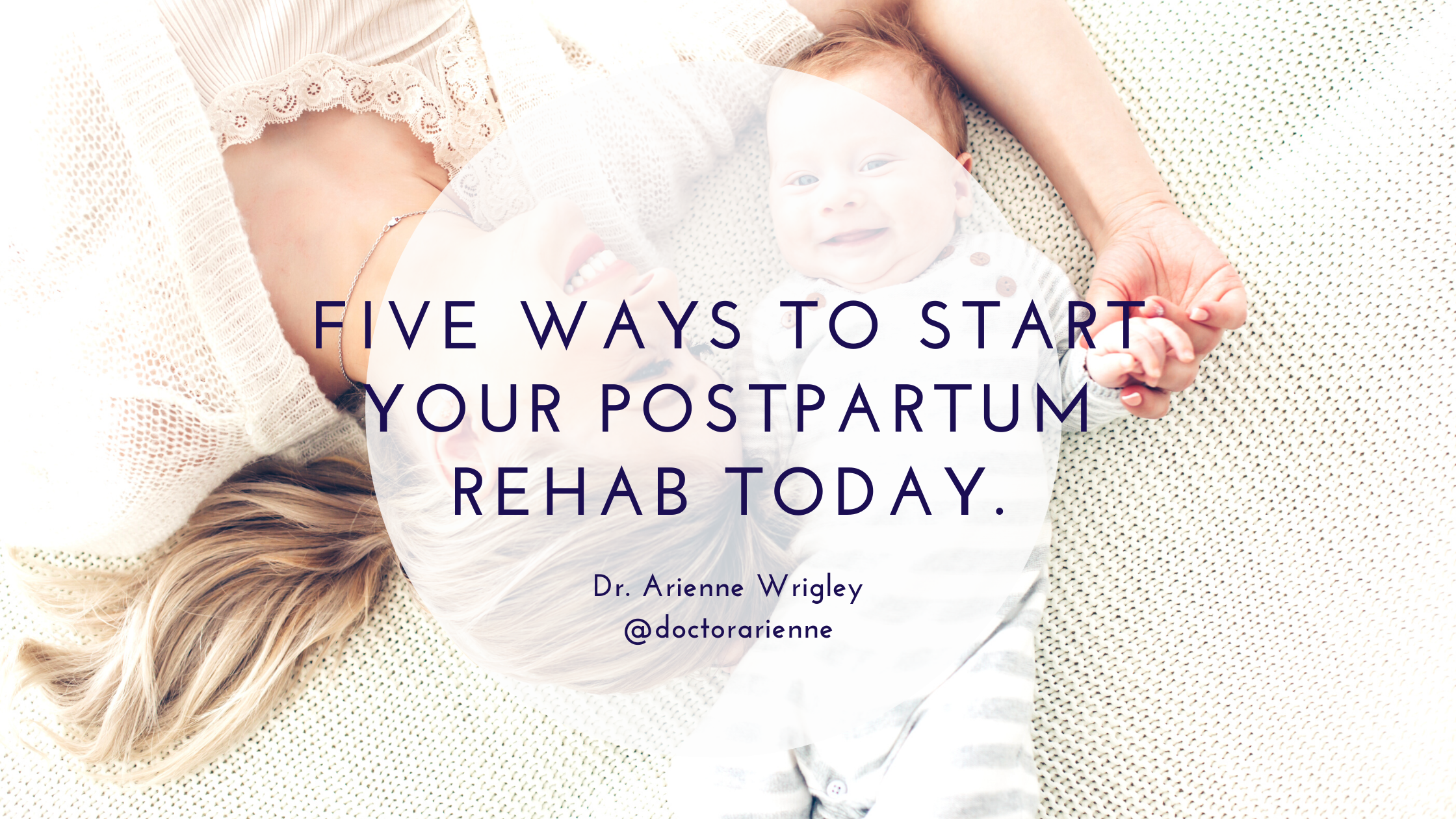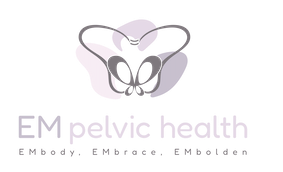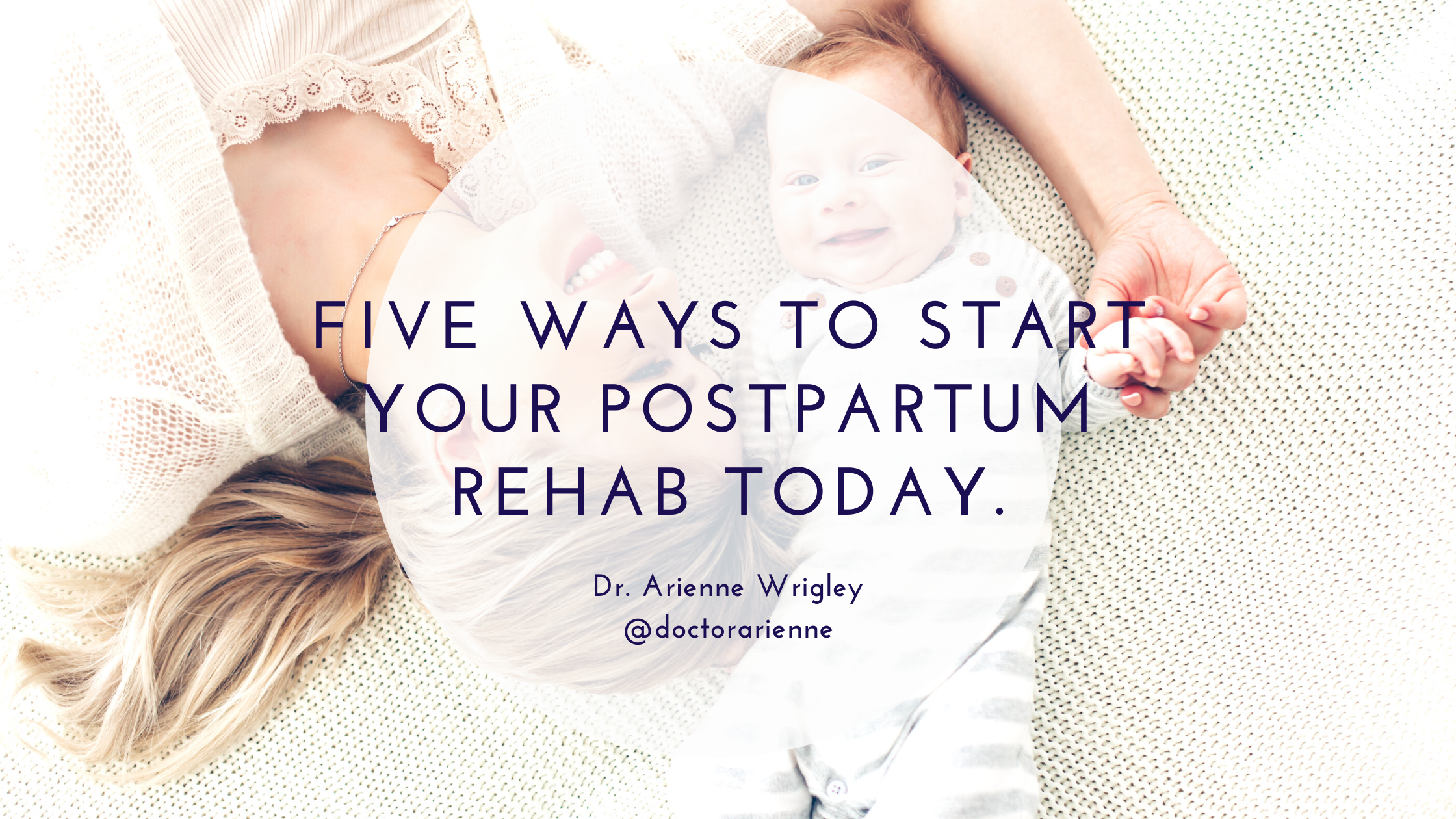
You just had a baby, or maybe it was months ago and you’re tired of peeing every time you sneeze, cough, jump, or run. You made it through 9 months of growing a tiny human, and just when you think the weird body changes are over, you realize that you’re three, six, even 12 months (or more) post-partum and you are STILL running to the bathroom, still can’t run without wearing a panty-liner, and sneezing is out of the question. You notice you have diastisis recti, or your low back is killing you and you feel you have lost touch with your entire midsection.
When you have a baby, whether naturally or by C-section, you stretch, tear, and/or cut through tissues that support your trunk, your pelvic organs, and disrupt our neural connections to our muscles – these are some of the reasons why we may experience low back pain, hernias, prolapse, and bladder and bowel issues. After delivery, these tissues need time to heal, but they also need to be reminded of their functional responsibilities.If you have ever had an orthopedic surgery (think ACL reconstruction, rotator cuff repair, etc), you know that regardless of your strength PRIOR to surgery, after incisions are made, and tissues are stitched and moved and repaired, there is atrophy of the tissue, and something as simple as an isometric contraction can feel impossible. There is a neuromuscular disconnect and our motor control requires time and attention. It is the same after babies!! We have to take the time to “re-train” our precious baby-bearing bodies by gently relearning how to engage and control both our tonic, and phasic muscles (i.e. pelvic floor, abdominals, spinal stabilizers, hip stabilizers, etc)
Below are five foundational exercises that are generally safe to perform in the first few weeks following delivery of your little peanut. Remember that the longer you wait to begin retraining these muscles, the more difficult it can be.
**These exercises are for low risk, low complication postpartum mamas and are GENERAL RECOMMENDATIONS. Each individual is different and may require different areas of focus. If you are unsure, please discuss with your local physical therapist, OB/GYN or physician before performing so they can fully evaluate you**
1. Diaphragmatic breathing
Breathing as an exercise? YES. Think of your diaphragm as the “lid” of your core and your pelvic floor as the “base” with your transverse abdominis and other core muscles connecting the two. Learning diaphragmatic breathing and practicing it helps to coordinate your pelvic floor and deep inner core. It is the foundation for re-establishing the connections lost by the over-stretching of tissues during pregnancy and trauma during labor and delivery.
-
The easiest way to work on diaphragmatic breathing is to begin by lying on your back and placing your hands on your belly.
-
Breathe in through your nose, trying to relax your shoulders and chest, and allow your breath to fill your belly, back, and sides. (you should see your belly rising, but also the expansion at the bottom of your ribs and your back)
-
Exhale slowly, allowing your belly to relax.
-
** after mastering the basics of diaphragmatic breathing, you can work on different variations of inhalation and exhalation. I like the 4:7:8 method that Dr Weil talks about here because it naturally relaxes our nervous system (great during beginning stages of labor, or post-partum when we are feeling a bit anxious or stressed out).
Keep in mind that proper breathing techniques can assist in recovery of pelvic floor and abdominals, but improper breathing can inhibit this recovery, and in some cases, can be detrimental to your progress.
2. The INFAMOUS KEGELS
If you had a doctor that gave you any information regarding pelvic floor and pre/post partum work that you can do to help prevent all of the aforementioned obstacles we face post-baby, you may have heard the term “kegels”. Maybe they mentioned that you should simply work on “stopping the flow of urine” sensation (but not actually do this while you’re peeing). If you think of your pelvic floor muscles as a hammock extending across and connecting to your pelvic bones, you can imagine that it holds the contents of your bladder, vagina, uterus, and rectum. It also supports our lower abdominal musculature. It is stretched during labor and delivery and sometimes even torn or cut `to accommodate the size of our baby. Creating an awareness and good tone in these muscles PRIOR to delivery is an excellent way to ensure improved muscle memory and an easier time re-teaching these muscles to activate post delivery (and can also pave the way for a faster labor and delivery) Most doctors and midwives will tell you that you can, and should begin performing kegels and pelvic floor exercises as early as 24 hours post-partum, as to not allow further atrophy to the tissues. Kegel’s should be performed many different ways in order to optimize function
-
If you’re unsure about what a kegel should feel like, while on the toilet, try to stop the flow of urine (this technique should only be performed to help you identify the feeling, and not used regularly to practice – it can affect the bladders reflexive emptying mechanism). You should feel your pelvic floor moving in toward midline and up.
-
Quick vs. Slow
-
first practice quick “flicks”, squeezing the muscles and relaxing them 10-15 times
-
Then try to squeeze and hold for 3-5 seconds 10 times. Try working your way up to 10 second holds. You will notice when you begin practicing this, that you feel the contraction diminishing after a few seconds. Keep practicing. It will get better.
-
Practice breathing through both quick and slow kegels. (exhale as you squeeze). You may find that you’re holding your breath initially or inhaling as you squeeze. Training yourself to exhale on the squeeze is an important part of regulating intra-abdominal pressure.
-
-
Progress by practicing in different positions
-
sitting
-
standing (feet together vs feet apart)
-
squatting
-
lying down
-
-
Try to isolate your pelvic floor without input from your abdominals. Being able to breathe through a kegel will help remind you to relax your abdominals as you go.
** Although less common amongst the newly postpartum population, there are cases in which kegels are not appropriate. If you are having pain with sex, difficulty emptying bowel or bladder, and/or other vulvar or vaginal pain, OR if performing kegels is making these symptoms worse, it is in your best interest to seek the assistance of a Pelvic Health Physical Therapist, or discuss these symptoms with your OB-GYN or physician to determine a more appropriate plan of care.
3. Activation of the Transverse Abdominus
Kegels are great, but they are not the ONLY important exercise to practice before and/or after having a baby. Activation of the abdominals can begin immediately post-partum, however, it is imperative to first work on our pelvic floor and core function before progressing to strengthening of the abdominals. If we attempt to strengthen the abdominals too quickly with forceful exercises, it increases pressure on the pelvic floor. (this includes exercises that are not isolating the abdominals, but require their effort, and/or produce a lot of intra-abdominal pressure). The transverse abdominus is our deepest abdominal muscle and an integral part of our core. It functions like a built in corset and together with the pelvic floor, helps in the process of delivery. the TA (or TrA or TvA depending on where you are looking) is also important as a spinal stabilizer, meaning that difficulty finding the neural connection to it can impact that achy low back you are experiencing post-partum.To activate the transverse abdominis, try practicing the steps below:
-
Lie down on your back and place your fingers on your hip bones (ASIS).
-
Move your fingers down ~1 inch and in ~1-2 inches so they are resting just below and to the inside of your hip bones
-
Take a deep breath and on the exhale, think about drawing your belly button to your spine (WITHOUT SUCKING IN)
-
You should not feel your glutes or your legs tense. You should only feel the belly push gently against your fingers. (if you feel more than a gentle push against your fingers, chances are, you are activating the obliques instead)
-
Practice 10-15 reps at a time, several times a day.
-
Progress by
-
working on holding for 5-10 seconds
-
practicing in different positions (sitting, standing)
-
practicing while performing a movement (clam shells, squats, heel slides, etc)
-
-
4. Diastisis Recti Check and Exercise
Not sure if you have diastis recti? You can check for this during and after pregnancy, and if you are diligent, a small diastasis can close pretty quickly following delivery.To check yourself for diastisis recti,
-
lie on your back with your knees bent
-
press the fingers of one hand into the area around your navel
-
breathe in, and while exhaling, raise your head, reaching the other hand towards your knees
-
you should feel your rectus muscle pushing your hand out of the way. How many fingers still fit in the gap?
-
1-2 fingers is generally just slackness that will tighten with time, however if you can fit more than two fingers in that gap, you have work to do.
-
Perform this test with your fingers placed in different positions along your navel line (above and below the belly button) to see if and where the gapping is.
To close the gap:
-
perform the same movement as when you checked for the gap, but use your hands to help “hold the seam” together.
-
Make sure that you are trying to pull your belly button to your spine and not allowing your belly to rise in the middle
-
Try 5 sets of 10 to start, and practice daily.
-
progress to lifting your head AND shoulders when you can lift your head without the support of your hand – this will begin to incorporate your other abdominals**if you try to progress to crunches/curl-ups or other high intensity abdominal exercises too quickly, you can actually make the gap WORSE (or even cause abdominal hernias), so progress slowly and be diligent about the quality of your movement**
5. Pelvic Tilting
Understanding how to engage and move your pelvis not only helps the process of labor and delivery, but can relieve low back pain, improve posture, and strengthen your core post-partum. As you perform these tilting exercises, think of your pelvis as a bowl of water.
-
Lie on your back with your knees bent
-
Rest your hands on your hip bones or lower abdominals
-
Roll your pelvis back and press your waist against the floor (think about pouring the bowl of water on the floor)
-
Try the same thing, but roll your pelvis forward, as if you were trying to pour the water in the opposite direction
-
Try tilting your pelvis side to side
-
progress by
-
lying on your side
-
sitting in a chair or on a bench
-
using an exercise ball
-
practice on all fours
-
practice in standing
-
* if you feel like you have a good handle on the pelvic tilt, progress to bridges (you can see a blurb about that here)
Remember, once you are post-partum, you are always post-partum. However, while many of these aches, pains, and continence issues are common, they are NOT normal. you owe it to yourself to take care of you, too! Have questions? Need more information? Want to share your post-partum stories?Leave me a comment, or email me! (arienne@doctorarienne.com)

